
Compressed SF6 gas used in MV and HV switchgears as an insulating medium has led to the development of compact gas-insulated substation (CIS) technology (figure 1). GIS , having many advantages over often used and conventional air-insulated substations (AIS), have been receiving wide application.
However, this alternate technology has inevitably lead to a different set of problems to resolve. in the case of substation earthing, we can discern three major aspects of the GIS substation design which need a different approach to those used in AIS.
- The use of a 10 times better insulating gas makes it possible to design a much more compact substation. This also means a significant reduction in the grounded area of the substation.
- This ‘compact’ design means the phase conductors are much closer than in AIS and with metal enclosures, for gas containment, electromagnetically induced currents appear in the earthing system.
- Compressed SF6 gas insulation facilitates small dielectric clearances in the GIS. As a result breakdown occurs rapidly in the nanosecond range. The rapid collapse of voltage results in the generation of very fast travelling wave transients which propagate throughout the CIS. The coupling of these transients with the earthing system provokes a transient ground potential rise (TGPR).
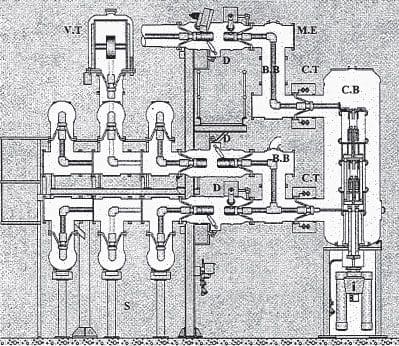
Explanation:
CB: Circuit Breaker
D: Disconnectors
ME: Metal Enclosure
BB: BusBars
CT: Current Transfomers
VT: Voltage Transformers
S: Steel structures
Reduced ground area
Normally, with an AIS, a single uninsulated copper loop laid around the perimeter of the site with cross connections to pick up the individual items of equipment, will provide a sufficiently low resistance electrode. However, the smaller area occupied by a CIS means that the size of the main earth loop will be smaller and therefore the total amount of conducting path will also be smaller.
The possible solutions to reduce the earth electrode resistance are (1):
- High density grid: frequent and short connections from the switchgear elements to the earth grid. This reduces the TGPR in the GIS and contributes to reduce the total earth electrode resistance, but not in direct proportion to the additional length.
- Connection to the reinforced concrete mat: connecting the reinforcing steel mesh and structural steel to the earth grid will reduce the total earth electrode resistance. However this is complicated and it has to be done in a way that avoids problems of overheating and damage of the reinforced structure due to excessive circulating currents.
- Use of deep driven ground rods: If, after the above methods have been applied, the earth electrode resistance is still high, then the use of dee!p driven ground rods will be required.
Induced currents
Gas Insulated Substations have a grounded outer sheath enclosing the high voltage inner conductor, unlike conventional equipment whose closest ground is the earth’s surface. At the same time the phase separation is muc:h smaller.
Depending on the current circulating through the bus-bars there will be a significant electromagnetic field surrounding the enclosures (figure 2). Thle alternating variation of this magnetic field induces currents in the grounded enclosure and other metallic parts in the substation such as steel structures, inter-phase enclosure connections and ground connections (i.e. earth shunt connections) etc. (2,4,5).
The induced currents in the enclosure can reach 90% of the value of the primary busbar current and they circulate in opposite direction which reduces the total magnetic field outside thle enclosure.
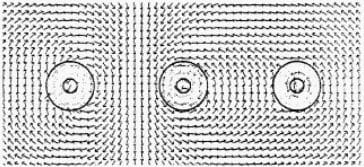
Measurements have been performed in a Reyrolle 420 kV substation using a portable current transformer (CT). This consisted of a 0.5m diameter, flexible Rogowski coil, an integrator and a digital voltmeter. The accuracy of the measurement system was first checked in the laboratory which showed less than 5% error wich was considered to be adequate for the proposed measurements.
The Rogowski coil was wrapped around various earthing connections in the GIS, e.g. grounded chambers, earth straps, inter-phase shunts, steel supports, ladders etc. The results confirmed a high percentage of current circulating through the enclosure (in the range from 50 to 85% of the 2000 A of the primary current).
It was also found that a high level of circulating current (up to a 50%) was present in the inter-phase copper earth straps which shunt the individual phase enclosures.
Fast Transients Overvoltages and TGPR
At the beginning of the GIS technology, the grounding design was based in the classical approach of limiting the power frequency enclosure potentials to safe levels based on the maximum expected fault-current conditions.
In contrast to these relatively low potentials, arcing between the grounded enclosures and other grounded components which are indicative of much higher potentials, were routinely observed during breakdown in HV tests or during normal disconnector operation. An exhaustive research was done to understand the mechanism of this particular TGPR in CIS.
The reasons for this TGPR were the specific characteristics of the breakdown in SF6 producing overvoltages with a very fast rise time of 5-20 ns and at the same time the specific coaxial arrangement of the bus-duct which happened to be very good for the transmission of these MHz range voltage surges.
Because of the low operating speed of the disconnector, each closing and opening operation will produce tens of pre-strikes and re-strikes (figure 3).

Each pre-strike generates a fast transient wave of half the value of the voltage across the contacts which is transmitted in both directions away from the pre-strike point (3). When the travelling wave arrives at the aidSF6 termination, the vertical bushing and the overhead line define external surge impedances which allow the incident travelling wave to “refract” out.
In figure 4, the aidSF6 termination is modelled as a junction of three transmission lines each with its own surge impedance:
- The internal coaxial GIS bus duct.
- The overhead line-to-ground transmission line.
- The bus enclosure to ground transmission line.
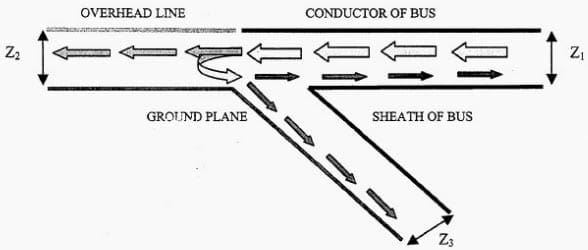
One part of the incident wave is reflected back into the bus duct, another part continues through the overhead line-to-ground transmission line and the rest forms the TGPR at the bushing-enclosure junction (6). This TGPR is soon attenuated by the enclosure ground straps which act as other transmission lines.
Just to give an idea of the order of magnitude of the TGPR these are the results of the measurements performed in a 525 kV GIS by Ontario-Hydro (6):
- Voltage across contacts during disconnector closing: 526 kV(Vs)
- Voltage propagate through GIS bus : 0.5 Vs = 263 kV
- Arrives at bushing A (17.7 m from Vs) : bush i n 9).
- TGPR at bushing A: 45 kV (26% V input to bushing)
- Maximum TGPR measured in substation building: 3 kV 172 kV (33% attenuation by T of
Some of the reported experiences of TGPR in GIS are :
- TGPR is of relatively high magnitude but lasts only microseconds with frequencies to above 30MHz.
- Personal safety : no injuries reported but possible dangerous reactions against the spark or tingling when working in the GIS .
- Inadvertent operation of protective devices.
- Destruction of electronic components in secondary equipment and temporary measurement equipment used for commissioning etc..
- Sparking in air, between the grounded parts of the system i.e. between earth straps in close proximity.
Short, straight and low inductance connections to the earth grid contribute to reduce the TGPR. If the GIS is inside a building, then connecting the enclosure [via short earth straps] to the building structure when crossing the walls will help to attenuate the TGPR inside the substation.
Finally, special care must be taken when dealing with discontinuities in the gas enclosure as encountered with an external CT, cable sealing end:s, transformer connections etc. At these points the enclosures are separated bly an insulating spacer and the associated earth strap connections are often too long and too inductive for effective grounding of high frequency transient potentials.
Therefore significant voltages of several kV develop across the insulated flange which may cause sparking in the surrounding air. In this case the use of surge suppressers, such as metal oxide varistors (MOV) is highly advisable.
Summary
When designing the grounding of a CIS, together with the classical approlimiting the power frequency enclosure potentials to safe levels based on the maximum expected fault-current conditions, it is also necessary to be aware of the specific problems related to the GIS design. Consideration must be given to induced currents which may cause overheating in the earthing system even under normal load flow conditions.
The effects of the TGPR produced by fast transients overvoltages must also be considered and the associated impact on high frequency earthing techniques especially at enclosure discontinuities.
SOURCE: Terry Irwin, J.Lopez-Roldan (VA Tech Reyrolle)

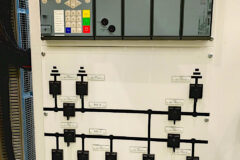

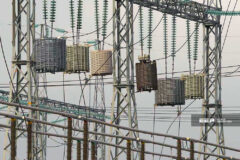



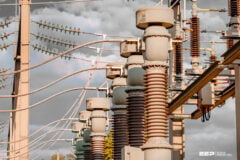
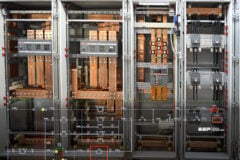
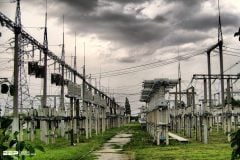

Gotta a problem – Need response sooner than normal, I have underground/duct bank got 18 4″ pc schedule 80 conduit and the are branching out different ways after leaving the cable tray
There is 7-480 motor circuits and 11 control
Circuits.
What formula deters the field pull box height x depth x length can give me insight please.
This is a industrial apply unhazardous atea
can you send me a link.. Thank you God Bless
Dear im a electrical jr inspector i request you to send me wt are the things or list i need to check at the time of inspecting a gis (115 kv ) can you send me email regarding this job pls
Dear,
Possible permitting provide me with information on the difference in terms of pros and cons between cells average of tension 20 kV / 400 ( (AIS — GIS )SF6
Thanks
Dear Edvard
can you send me a link from where I can download this fantastic article. Thanks
Dear Edvard
Can you send me a link from where I can download this wonderful article?.
It’s fixed now, thank you very much for the remark!
in the article “GIS vs AIS – Substation Earthing”, there are various figures which are referred to, but these figures are not present in the article.